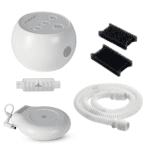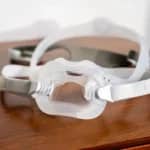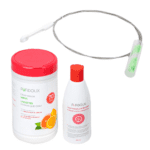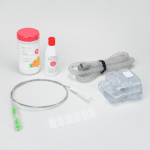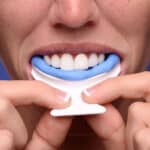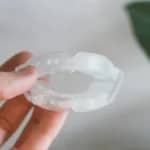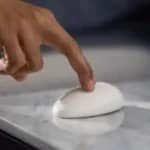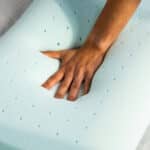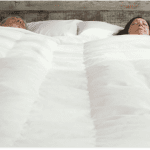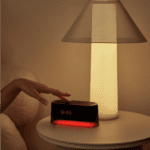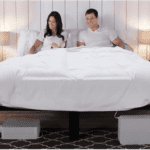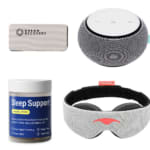Arthritis and sleep share a complicated relationship. If you have arthritis, you may experience pain at night that makes it difficult to sleep soundly. Or, you may notice your symptoms are more severe when waking up. While pain from arthritis often improves with rest, poor sleep can aggravate arthritis symptoms. We’ll break down the features to look for in a mattress so you can sleep more comfortably if you live with arthritis. We’ll also share our selection of the best mattresses for arthritis.
Best Mattresses for Arthritis Relief
-
Best Overall Mattress
–
Nectar Premier
View Details
-
Best Value Mattress
–
Layla Memory Foam Mattress
View Details
-
Most Comfortable Mattress
–
WinkBed
View Details
-
Best Luxury Mattress
–
Zenhaven
View Details
-
Best Mattress for Pressure Relief
–
Tempur-Pedic TEMPUR-Adapt
View Details
Swipe for more
Best Overall Mattress
Nectar Premier
Save 50% on mattresses & 66% on bundles
Save 50% on mattresses & 66% on bundles
The Nectar Premier’s memory foam and polyfoam layers provide significant comfort and support at an affordable price-point. The mattress’ solid pressure relief and ability to isolate motion stood out to our testers, indicating that this is a good mattress for those with arthritis, especially if they also have bed partners.

Ideal For
Couples
Firmness
Medium Firm (6)
Cooling
Some Airflow
Value
Great Value
Pros & Cons
-
Pros
-
Thick layer of memory foam contours to relieve pressure points
-
Strong motion isolation
-
Competitively priced
-
-
Cons
-
May be too soft for stomach sleepers
-
Edges compress under pressure
-
Our Take
Why We Like It
The Nectar Premier is a 13-inch all-foam mattress that incorporates cooling technology intended to prevent the heat buildup normally associated with memory foam. Its gel-infused foam conforms to the body to relieve pressure points and help keep the spine properly aligned.
Our team was impressed with how well this mattress contours the body, relieving tension at pressure points. At the same time, its medium firm (6) feel prevents excess sinkage. Additionally, the Nectar Premier isolates motion very well, so couples shouldn’t disturb each other when shifting position or getting into or out of bed.
How Does It Feel?
The mattress has a medium firm (6) feel, which falls in the range favored by most people. Sleepers who want the signature hug of memory foam without excessive sinking may find the Nectar Premier to be a good match.
During our testing, this mattress scored particularly well with side sleepers over 130 pounds and back sleepers under 130 pounds. Its memory foam cushions the shoulders, hips, and lumbar region comfortably, which may help ease arthritis-related pain.
Sleeper Type Ratings
The ratings below indicate how suitable this mattress is for different sleeping positions and sleeper weights, taking into account factors such as support and pressure relief.
Best Value Mattress
Layla Memory Foam Mattress
Up to $200 off mattresses + 2 free pillows
Up to $200 off mattresses + 2 free pillows
With its flippable design, the Layla Memory Foam Mattress is essentially two mattresses in one available at a competitive price-point. The ability to choose between firmness levels makes this mattress suitable for a wide range of sleepers, including those with arthritis pain. Copper-gel memory foam keeps the body cushioned and comfortable, especially on the softer side.

Ideal For
Back Sleepers
Firmness
Medium Soft (4), Firm (7)
Cooling
Not Ideal for Hot Sleepers
Value
Great Value
Pros & Cons
-
Pros
-
Flippable design with medium soft (4) and firm (7) sides
-
Zoned transitional layer on soft side offers targeted pressure relief
-
Foam construction eliminates most motion transfer
-
-
Cons
-
Firm side supplies less pressure relief
-
Some sleepers may have trouble switching positions when using the soft side
-
No reinforced perimeter
-
Our Take
Why We Like It
The Layla’s versatile two-sided design can accommodate most people regardless of their sleep position or body weight. Our testers found that the soft side provided very good pressure relief, which is important for easing aches and pains related to arthritis. The conforming foam also isolates motion, making this mattress a good option for people who share a bed.
How Does It Feel?
With both a medium soft (4) side and a firm (7) side, the Layla Memory Foam Mattress offers two distinct options that may appeal to different sleepers. In our tests, side sleepers who weigh less than 230 pounds appreciated the plusher side. Our side sleepers over 230 pounds, back sleepers, and stomach sleepers preferred the firmer side because it more comfortably supported the lower back and midsection.
Sleeper Type Ratings
The ratings below indicate how suitable this mattress is for different sleeping positions and sleeper weights, taking into account factors such as support and pressure relief.
Most Comfortable Mattress
WinkBed
Get $300 off all mattresses at Winkbeds
Get $300 off all mattresses at Winkbeds
With its high-quality materials and wide range of firmness options, the WinkBed can provide excellent comfort for just about any sleep position or body type. For those with arthritis pain, the WinkBed’s combination of cushioning foam comfort layers and a responsive innerspring support core offer a particularly good balance of pressure relief and support.

Ideal For
All Sleepers
Firmness
Medium Soft (4), Medium Firm (6), Firm (7), Firm (8)
Cooling
Great Airflow
Value
Good Value
Pros & Cons
-
Pros
-
Four firmness choices provide options for most sleepers
-
Zoned support gives added lower back support
-
Reinforced edges provide sense of security when getting in and out of bed
-
-
Cons
-
Slightly higher price-point
-
Moderate contouring may not provide sufficient pressure relief for some
-
Sleeping partners may disagree on the ideal firmness
-
Our Take
Why We Like It
The WinkBed combines a polyfoam comfort system with a pocketed coil support core to create a sturdy, responsive feel that still provides the cushioning that appeals to many people with arthritis. The WinkBed Mattress comes in four firmness options: Softer (4), Luxury Firm (6), Firmer (7), and Plus (8).
This mattress stood out because of its zoned pocketed coil system, which provides targeted support in the middle of the mattress and prevents excessive sinkage. As a result, the WinkBed can promote good spinal alignment and reduce pain for many different kinds of sleepers. This WinkBed’s reinforced edges also make getting in and out of bed easier for people with reduced mobility.
How Does It Feel?
All of the WinkBed models feel springy and supportive, thanks to their coil support core. However, the firmness level varies by model. The Softer (4) model was popular among the side sleepers on our testing team, while the Firmer (7) and Plus (8) models were a better match for most of our back sleepers, stomach sleepers, and those weighing over 230 pounds.
Sleeper Type Ratings
The ratings below indicate how suitable this mattress is for different sleeping positions and sleeper weights, taking into account factors such as support and pressure relief.
Best Luxury Mattress
Zenhaven
$300 off orders of $1,000 or more
$300 off orders of $1,000 or more
The Zenhaven Natural Latex Mattress impressed our testing team with its standout temperature regulation and sturdy construction. Its five-zone vented latex comfort layer offers an excellent combination of targeted pressure relief and enhanced airflow, and the flippable design provides a choice of firmness options that may benefit sleepers with arthritis.

Ideal For
Mobility Issues
Firmness
Medium Soft (4), Firm (7)
Cooling
Sleeps Cool
Value
Fair Value
Pros & Cons
-
Pros
-
Organic materials sleep cool and facilitate movement
-
Zoned, two-sided construction with medium soft (4) and firm (7) sides
-
Free White Glove delivery
-
-
Cons
-
High price-point
-
Returns are subject to a $99 fee
-
May transfer some motion
-
Our Take
Why We Like It
The Zenhaven is a hypoallergenic latex mattress that combines organic wool, natural Dunlop latex, and an organic cotton cover. This reversible mattress features a medium soft (4) side and a firm (7) side. Both the latex and the cover are engineered to enhance lower back support.
People with arthritis may appreciate how this latex mattress relieves pressure points around the back, hips, and shoulders without restricting mobility or movement on the mattress. Zoned quilting in the cover and zoned latex give extra support to the midsection, which promotes spinal alignment during sleep.
How Does It Feel?
Each side of the Zenhaven has a distinct feel. The medium soft (4) side provides extra cushioning that felt very comfortable for our side-sleeping testers who weigh less than 130 pounds. Our side sleepers over 230 pounds, stomach sleepers, and back sleepers preferred the firm (7) side due to its lighter contouring and firmer feel. Thanks to its aerated latex and breathable wool and cotton, the mattress sleeps quite cool.
Sleeper Type Ratings
The ratings below indicate how suitable this mattress is for different sleeping positions and sleeper weights, taking into account factors such as support and pressure relief.
Best Mattress for Pressure Relief
Tempur-Pedic TEMPUR-Adapt
$2,199 from Tempur-Pedic (queen)
$2,199 from Tempur-Pedic (queen)
The TEMPUR-Adapt embodies the durable craftsmanship and strong performance that has come to define Tempur-Pedic as a leading mattress brand. This plush all-foam model provides next-level cushioning to alleviate pain and pressure in all of your most sensitive areas, and also isolates motion for couples.

Ideal For
Side Sleepers
Firmness
Medium (5)
Cooling
Fair Airflow
Value
Good Value
Pros & Cons
-
Pros
-
Excellent motion isolation
-
Close-conforming foams wrap around body to evenly distribute pressure
-
Free White Glove delivery
-
-
Cons
-
Elevated price-point
-
Too soft for most stomach and back sleepers over 130 pounds
-
Memory foam is slow to regain its shape and offers little edge support
-
Our Take
Why We Like It
During hands-on tests, the TEMPUR-Adapt earned stellar ratings from our side sleepers weighing up to 230 pounds. Heavier testers who use this position also felt fairly comfortable on the mattress. On the other hand, most of our back and stomach sleepers who weigh 130 pounds or more found the TEMPUR-Adapt too soft and lacking in support.
Pressure relief was a standout performance category for this mattress. Our body-mapping technology indicates the foam layers deliver plenty of cradling along the spine, which in turn promotes even alignment and reduces pressure buildup in the shoulders, lower back, and hips. Motion isolation was another testing highlight — couples should notice very little movement on the surface.
How Does It Feel?
The top two layers are made of TEMPUR memory foam, a proprietary material prized for its deep, even contouring and longer-than-average lifespan. High-density polyfoam makes up the support core. This base layer stabilizes the mattress fairly well, but its medium (5) feel and adaptive surface result in a very plush design. Those seeking more support should consider the TEMPUR-Adapt Hybrid, which uses pocketed coils instead of base foam. A knit polyester cover encases the mattress.
Sleeper Type Ratings
The ratings below indicate how suitable this mattress is for different sleeping positions and sleeper weights, taking into account factors such as support and pressure relief.
If you have back pain from arthritis, we invite you to check out our article on the best mattresses for back pain caused by arthritis. For more general information on choosing a mattress, see our guide to the best mattresses of 2025.
Best Overall Mattress
Nectar Premier
Save 50% on mattresses & 66% on bundles
SHOP NOWCushioning memory foam and strong motion isolation make the Nectar Premier a comforting pick, particularly for couples.
SEE MORE DETAILS

Best Value Mattress
Layla Memory Foam Mattress
Up to $200 off mattresses + 2 free pillows
SHOP NOWWith a flippable design, the Layla Mattress offers two firmnesses in one at an accessible price, allowing you to change the feel of your bed from night to night.
SEE MORE DETAILS

Most Comfortable Mattress
WinkBed
Get $300 off all mattresses at Winkbeds
SHOP NOWThe WinkBed is available in a variety of different firmnesses, providing its unique blend of strong support and pressure relief for virtually any sleeper.
SEE MORE DETAILS

Best Luxury Mattress
Zenhaven
$300 off orders of $1,000 or more
SHOP NOWThe Zenhaven’s strong latex construction keeps it sleeping cool and staying supportive through the night.
SEE MORE DETAILS

Best Mattress for Pressure Relief
Tempur-Pedic TEMPUR-Adapt
$2,199 from Tempur-Pedic (queen)
SHOP NOWThe TEMPUR-Adapt’s next-level cushioning foams work to alleviate pain and pressure in the body’s most sensitive areas.
SEE MORE DETAILS

Compare Our Top Picks
| Nectar Premier | Layla Memory Foam Mattress | WinkBed | Zenhaven | Tempur-Pedic TEMPUR-Adapt | |
|---|---|---|---|---|---|
| Mattress Type | Foam | Foam | Innerspring | Latex | Foam |
| Firmness | Medium Firm (6) | Medium Soft (4), Firm (7) | Medium Soft (4), Medium Firm (6), Firm (7), Firm (8) | Medium Soft (4), Firm (7) | Medium (5) |
| Ideal For | Couples | Back Sleepers | All Sleepers | Mobility Issues | Side Sleepers |
| Temperature Control | Good | Good | Very Good | Very Good | Fair |
| Pressure Relief | Very Good | Very Good | Good | Very Good | Very Good |
| Sleep Trial | 365 nights | 120 nights | 120 nights (30-night requirement) | 365 nights ($99 return fee) | 90 nights (30-night requirement) |
What Is the Best Type of Mattress for Arthritis?
Foam, latex, hybrid, innerspring, and airbed mattresses each offer distinct advantages when sleeping with joint pain. The best mattress type for you depends on your individual symptoms.
Foam mattresses tend to contour more closely, which can alleviate pressure points if you have rheumatoid arthritis. Innerspring mattresses are mostly made of steel coils and have limited cushioning, but their firm, responsive surface may provide better support if you have osteoarthritis.
Hybrid mattresses combine the advantages of foam and innerspring mattresses, while latex mattresses offer a responsive surface that facilitates movement. Finally, airbeds have firmness levels that can be adjusted in precise increments to adapt along with your symptoms.
| Mattress Type | Pros | Cons |
| Foam | Strong pressure reliefReduces motion transfer when sleeping with a partner | May impede movementWeaker edge support than most hybridsProne to heat retention |
| Latex | ResponsiveModerate pressure relief | May have weak edge supportExpensiveAverage motion transfer |
| Hybrid | Strong edge supportGood airflowResponsiveGood pressure relief | Motion transfer can be an issueDepending on design, may offer less pressure relief than a foam mattress |
| Innerspring | Promotes ease of movement by keeping sleepers “on” as opposed to “in” the bed | Little to no pressure reliefNoticeable motion transfer when sleeping with a partner |
| Airbed | Firmness can be adjusted in real time | Expensive |
Video: Breaking Down the Major Mattress Types
Watch our video for an in-depth overview of some of the most common types of mattresses.
What Is the Best Mattress Firmness for Arthritis?
The ideal mattress firmness for arthritis depends on your body type, usual sleeping position, and personal preference. You also need to consider how your arthritis symptoms influence your sleeping posture and sensitivity to pressure points when choosing a mattress. There are many different types of arthritis, and symptoms vary from person to person.
People with rheumatoid arthritis experience swelling in the joints along with pain and muscle aches. While rheumatoid arthritis starts in smaller joints like the thumbs and toes, it often progresses to the shoulders, knees, and cervical spine. Less commonly, rheumatoid arthritis may affect the neck and hips. To cushion tender areas, a softer mattress may be appropriate.
In osteoarthritis, cartilage that usually protects the joints breaks down, causing swelling, stiffness, and joint pain that can impact sleep and movement. Osteoarthritis commonly targets the knees, hips, spine, and hands. To facilitate switching sleeping positions and prevent added strain from poor posture, you may find a firm mattress most comfortable.
How to Choose a Mattress When You Have Arthritis
When choosing a mattress for arthritis, you should consider practical details as well as how the mattress performs for your individual sleeping style.
Sleeping Position
Your sleeping position dictates how your body interacts with your mattress. Since each person’s arthritis symptoms are unique, it’s difficult to establish a single sleeping position that works for everybody. However, the general goals are to support the spine and distribute weight evenly without putting too much pressure on tender areas.
Back sleeping naturally aligns the spine and may be most comfortable. That said, you may experience pressure buildup in the lumbar area while back sleeping if your mattress doesn’t conform closely enough.
Many people with arthritis experience increased tenderness when pressure is applied to painful areas. Side sleepers are the most likely to experience pressure points, because most of the body’s weight comes to rest on the hips and shoulders in this position. That said, a pressure-relieving mattress can help you sleep comfortably on your side.
Stomach sleeping is not typically recommended if you have arthritis, since it forces the head to one side and may increase neck pain.
Mattress Performance
If you have arthritis, some of the most important features to look for in a mattress include pressure relief, ease of movement, and edge support.
| Performance Factor | Description |
| Pressure Relief | Pressure relief is key when buying a mattress for arthritis, especially if parts of your body are tender to the touch. Close-conforming materials such as memory foam or Talalay latex help spread out your body’s weight and reduce pressure buildup at contact points. |
| Ease of Movement | A common symptom of arthritis is joint stiffness that builds up after long periods of immobility. This commonly happens in the morning after spending all night in bed. Responsive materials like latex or steel coils can make it easier to switch sleeping positions more often, which may help reduce morning stiffness. |
| Edge Support | Arthritis can cause muscle weakness, balance problems, stiffness, and knee pain or buckling knees that make it difficult to get out of bed. A mattress with reinforced edge support provides a more dependable surface to sit or lean on, and also helps reduce feelings of instability when sleeping near the edge of the bed. |
Sleep Trial and Warranty
A sleep trial offers the chance to sleep on a mattress in your own home and return it for a refund if you’re not happy. Sleep trials usually last at least a few months and they offer the opportunity to test if a mattress alleviates or worsens your arthritis symptoms.
Mattress companies also back their products with a warranty, which protects shoppers against flaws in manufacturing. Most warranties cover defects such as rips or notable indentations in the foam, but aren’t designed to cover damage from misuse or wear and tear.
Carefully read the terms and conditions of the sleep trial and warranty, as you may be responsible for covering part of the costs in the event of a return or warranty claim.
Delivery and Setup
The vast majority of mattresses sold online today are compressed, rolled up, and shipped in a box to your doorstep. Mattresses are large and heavy, and setup requires moving the mattress to your bedroom, placing it on a bed base, and removing the packaging so it can expand. To make setup easier for people with limited mobility, some companies offer White Glove delivery.
With White Glove delivery, a delivery team sets up the mattress for you in your room of choice and disposes of the packing materials. You may also be offered the option of old mattress removal, so you don’t have to worry about transporting an old mattress to a landfill. Companies may charge a nominal fee for White Glove delivery and old mattress removal.
Tips for Relieving Arthritis Pain During Sleep
In addition to choosing the right mattress, there are other ways to help relieve arthritis pain at night.
- Add a topper to your bed: Mattress toppers are thin layers of material designed to change the feel of your mattress. Typically made of memory foam, polyfoam, or latex, they are a cost-effective way to make a mattress feel firmer or softer.
- Practice healthy sleep posture: Try to keep your spine as straight as possible while sleeping by choosing a supportive mattress and avoiding positions that require bending at unnatural angles. If you experience stronger pain on one side of your body, avoid sleeping on that side.
- Support your body with pillows: Pillows can help maintain spinal alignment by elevating unsupported body parts. For example, a pillow between the knees when side sleeping can improve hip alignment and relieve back strain, while a cervical pillow can keep the neck straight when back sleeping.
- Consult your physician: If you have arthritis, it’s important to seek treatment from a healthcare provider, who can develop a personalized plan to address your symptoms and potentially reduce long-term damage to your joints. Your physician may prescribe medication or additional lifestyle changes such as exercise or weight loss.
- Use heat or cold therapy before bed: Some people with arthritis find relief from applying a hot or cold pack to painful areas. Ask your doctor if this method is right for you.
- Wear a splint: Your doctor may recommend using a splint to immobilize and keep weight off affected joints while you sleep.
Discover More Mattress Solutions
Dive into our in-depth guides to learn more about choosing a mattress that’s right for your sleeping style.
More Mattress Guides
How We Test
Every mattress we recommend at Sleep Doctor goes through extensive testing in our Seattle lab. We use pressure mapping, SensorTag technology, and other tools to measure the most important performance metrics. Then, the testers on our sleep team put each mattress through its paces to see how it actually feels.
To find the best mattress for people with arthritis, we zeroed in on pressure relief, support, ease of movement, and edge support. Our team comprises individuals of varying body weights and sleeping position preferences, giving us a comprehensive idea of how each mattress performs for back, side, and stomach sleepers.
Frequently Asked Questions
Arthritis often causes stiffness on waking and increased pain at night, so it can be difficult to tell if these symptoms are from the arthritis itself or worsened by your mattress. However, if you notice markedly worse symptoms after spending time in bed, you may want to consider changing your sleeping setup.
The ideal mattress firmness depends on what type of arthritis you have, as well as your body weight and preferred sleeping position. Experts usually recommend using a firmer mattress if you have osteoarthritis, since soft surfaces inhibit ease of movement and may not provide sufficient spinal support. However, if you have rheumatoid arthritis, you may prefer a softer surface to cushion tender contact points.
Back and side sleeping are usually best for people with arthritis, although this may vary according to your symptoms. While back sleeping encourages healthy spinal alignment, it may put pressure on the lower back. Side sleeping on a conforming mattress can also encourage good spinal alignment, but may exacerbate hip or shoulder pain.
Most people with arthritis should avoid stomach sleeping, which puts added pressure on the neck and upper back.
Memory foam offers close contouring that relieves pressure points and may help relieve arthritis symptoms, particularly those of rheumatoid arthritis. By contrast, people with osteoarthritis typically do better with firmer materials that prevent sinkage. If you have limited movement or trouble getting in and out of bed, memory foam may not offer the responsive, sturdy surface you need.


